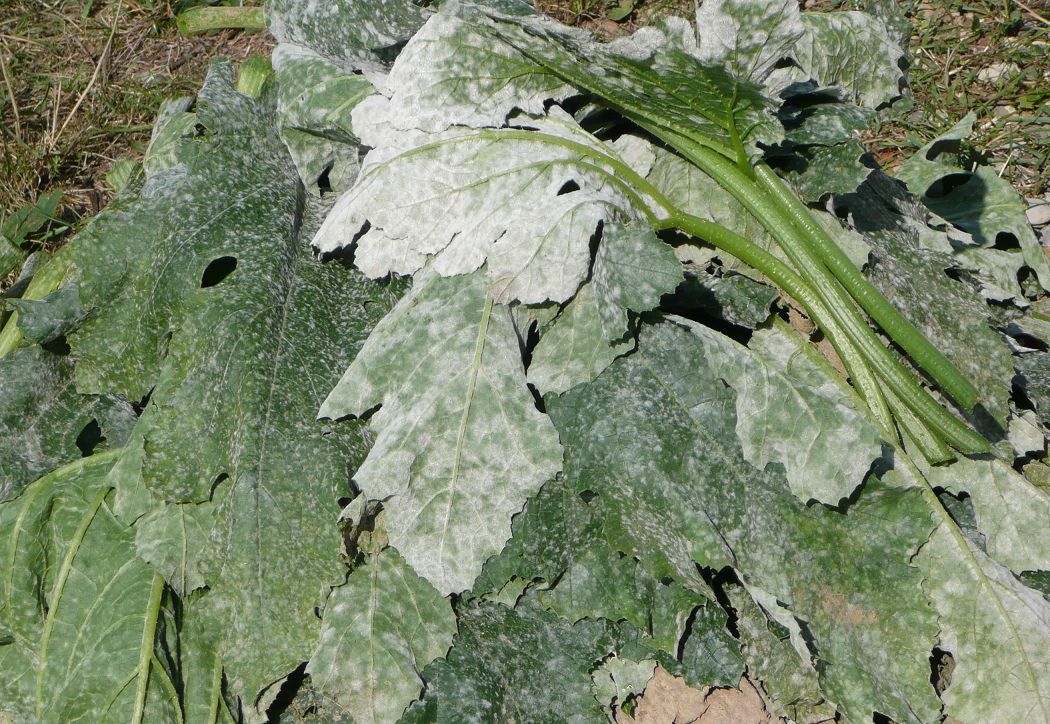
As many of you already know, plants do not only suffer from pests, but they can also suffer from various diseases. There are different types of these. They are usually distinguished by the pathogenic agent that causes them. In this article we will talk about cryptogamic diseases of plants. This term may not sound familiar to you, but some of these pathologies do.
We will not only explain what cryptogamic diseases of plants are, but we will talk about some examples of them, such as anthracnose or botrytis. So if you want to know more about this type of pathology, I recommend that you keep reading.
What are cryptogamic diseases?
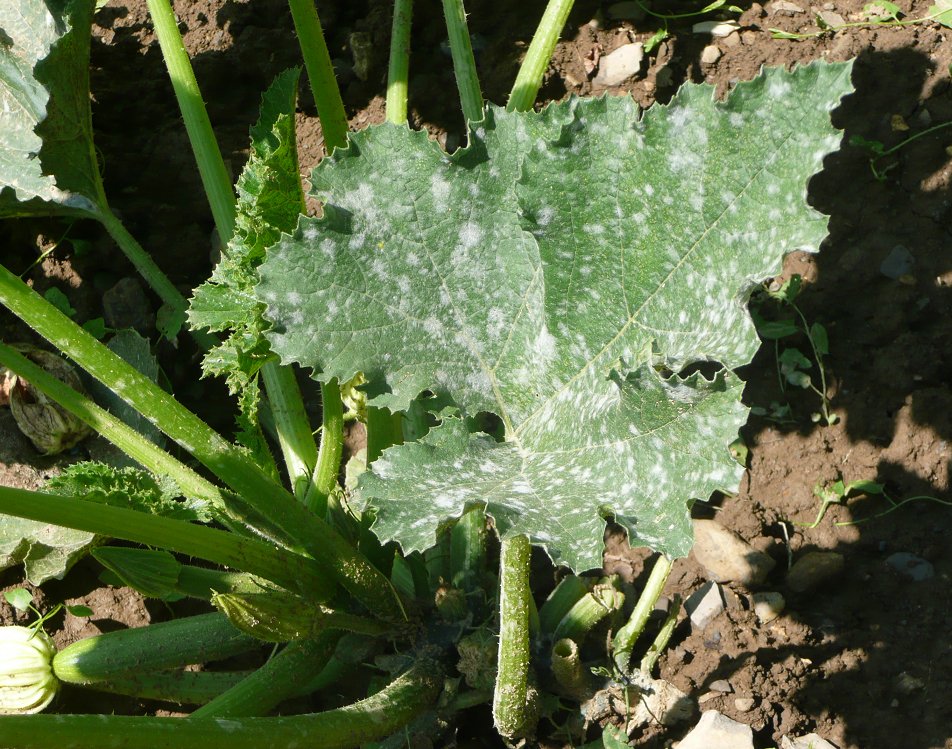
Before giving examples, we will first explain what cryptogamic plant diseases are. These are diseases caused by fungi or other filamentous parasitic organisms, such as those oomycetes. When animals are affected, this type of disease is called "mycosis".
But to what is the curious denomination of "cryptogamic" due? Well, both fungi and other filamentous organisms have been classified as cryptogamous plants. It is for this reason that the diseases they cause are known as cryptogamic diseases. The forms in which these pathologies are presented are very diverse, representing approximately 90% all plant pathologies, or plant diseases.
Evolution of cryptogamic plant diseases
Regarding the evolution of cryptogamic diseases in plants, contamination occurs first. The spores belonging to the cryptogamous fungi are transported, through the wind for example, to the plants, where they are deposited. Right there they begin to germinate and end up penetrating inside the plant tissues.
The attacking fungus passes through stomata and lenticels, which are natural openings in plants. It even usually has the ability to go through the cuticle! You can also access the interior of the vegetable through injuries that the plant in question has. These injuries can be caused both by insects and by ourselves, by not being careful when handling the vegetable.
Once the contamination of the plant is finished, it is time for the next phase: The incubation. This is when the fungus begins to branch out and invade the cells of plant tissues or the spaces between them. Then the first symptoms begin to appear, which end up developing little by little. These are accompanied by the fruiting of the fungus.
Those plants attacked by cryptogamous organisms can languish. In other words: They can suffer from obstruction of the vessels, necrosis of the tissue, etc. When it comes to combating these types of diseases, Fungicides are often used since they are generally fungi that invade plants.
Here we will talk about some examples of cryptogamic diseases of plants, I'm sure some of the others sound familiar to you.
Anthracnose
First of all we have the famous anthracnose, also known as canker or canker. It is very common in humid and hot areas. The fungus responsible for this disease usually belongs to the genera Gloeosporium o Colletotrichum, or be part of the species Coniothyrium fuckelii.
Anthracnose can infect various plants, from trees to herbs. Affected plants may exhibit various symptoms, such as the following:
- Sunken spots on the leaves with a wet appearance and of different colors.
- Necrosis in the nerves of leaves, flowers, fruits and stems.
- death and wilting of tissues (as a consequence of necrosis).
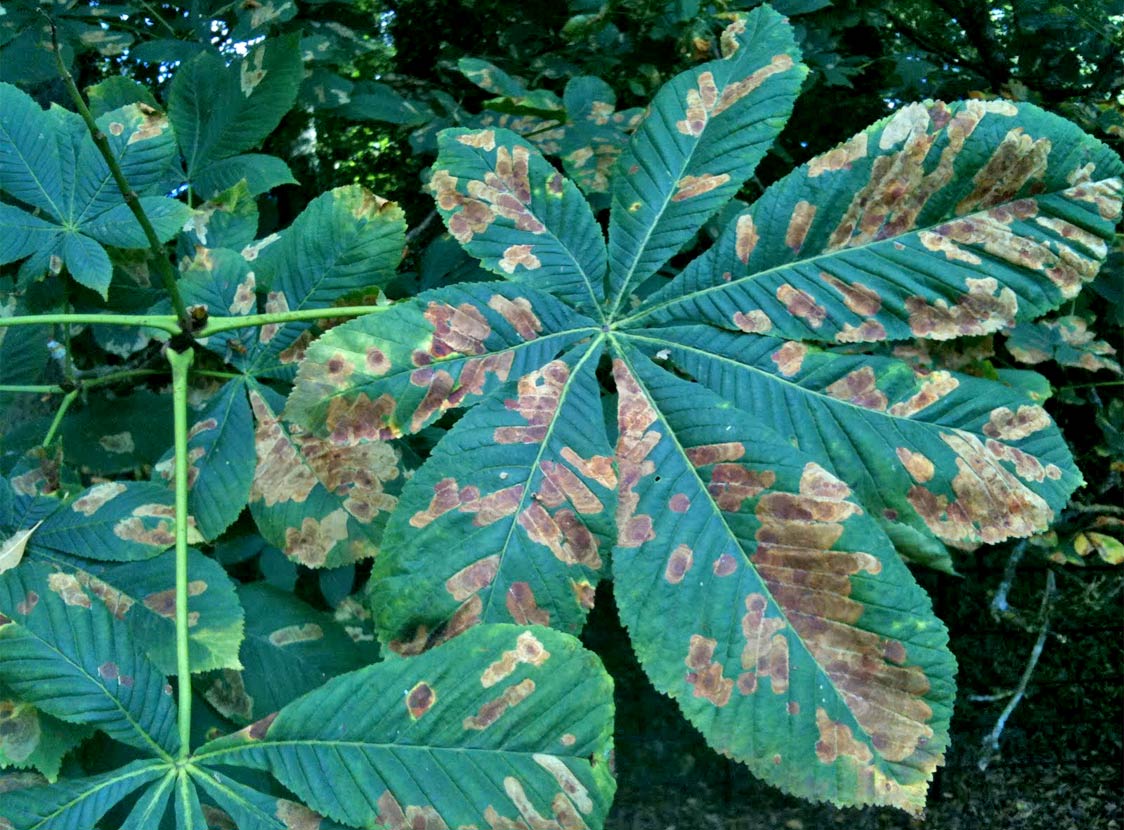
On many occasions, anthracnose initially appears in the cuts made when grafting stems. It also usually begins to manifest itself in the wounds caused by pruning. So we must be very careful when performing these tasks. If we suspect that our plants may be infected by these fungi, We must start treatment as soon as possible to control the disease. To prevent its appearance, it is best to use seeds that are resistant to this type of fungus.
If our vegetables are already infected, we can try various treatments to combat anthracnose:
- Destroy plant tissues that are affected by the fungus.
- Apply fungicides.
- Fight parasites and insects that spread this type of fungus.
- Natural remedies: Apply horsetail or nettle slurry, or use homemade fungicides made with milk, garlic and baking soda.
Botrytis
Another of the cryptogamic diseases of plants is the Botrytis cinerea, also known as botrytis. This time it is a fungus belonging to the genus Botryotinia family Sclerotiniaceae. Specifically, the species that causes this disease is the Botryotinia fuckeliana. This fungus does not only affect plants, but also animals and bacteria. Yes indeed, its preferred host is the vine.
As with most fungi, the risk of infection is greatly increased when the environment is hot and humid. Botrytis is also known as gray mold, since one of its most striking symptoms is the appearance of a type of grayish powder on the plant.
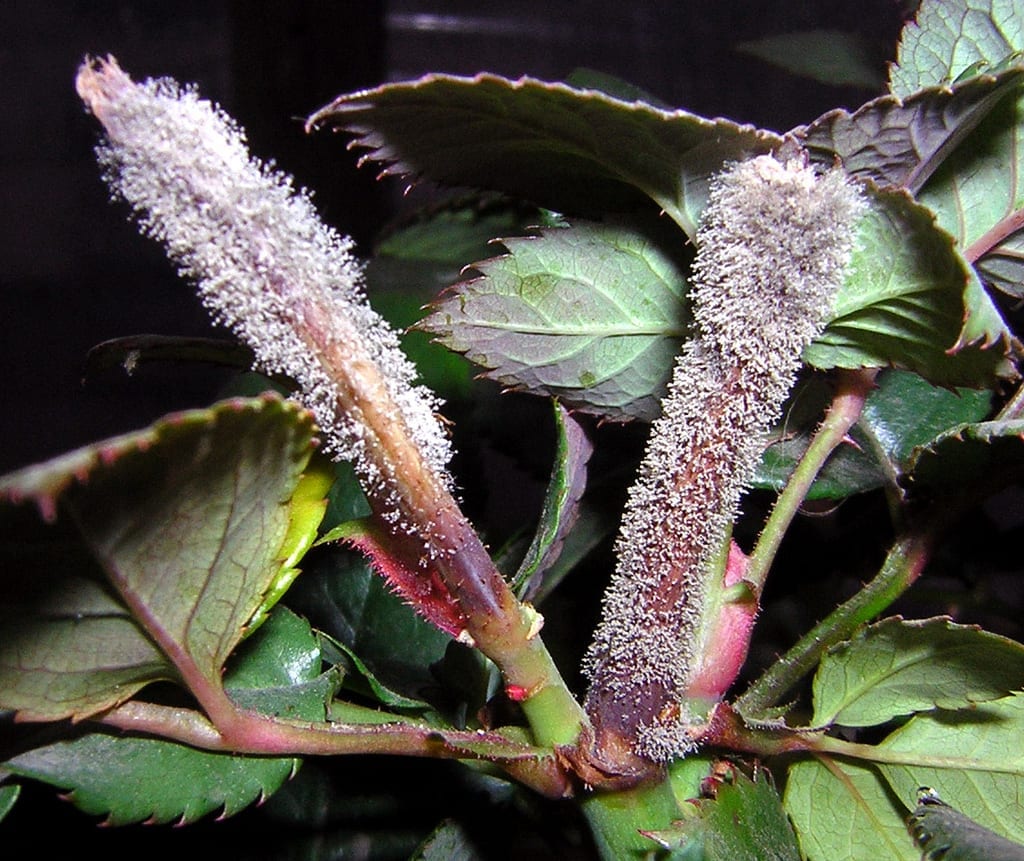
Although it is true that botrytis is a fairly simple disease to distinguish, it can be somewhat difficult to recognize at first. To help you with its detection, we will see below the symptoms caused by the fungus Botryotinia fuckeliana:
- Leaves that turn brown and eventually fall off
- Slowed overall growth of the affected plant
- Stems adopting a soft composition or rotting
- Death and abortion of flowers
- Fruits that turn dark brown or even black and eventually fall off
- Appearance of the characteristic grayish powder on the fruits, leaves and stems
Mildew
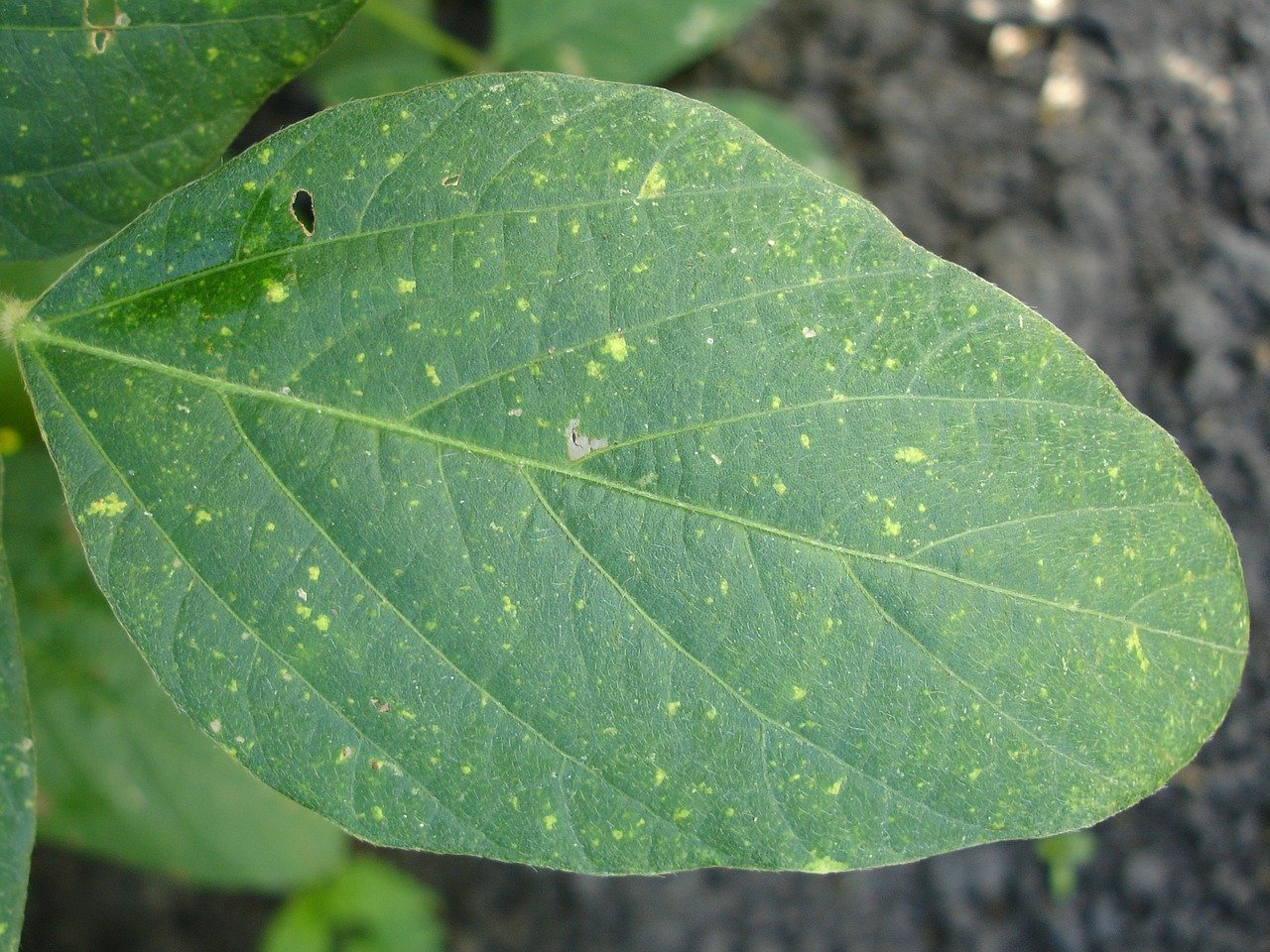
Mildiu is the name given to various cryptogamic diseases of plants. They are all those caused by oomycetes belonging to the family peronosporaceae. But what are oomycetes? The name means "egg fungi" and they are basically a group of filamentous protists that are part of the pseudofungi group. These pseudofungi are types of molds that are very similar to true fungi. However, they are not related to them.
Downy mildew-type cryptogamic diseases are spread by spores. They usually appear during rainy periods and with high temperatures, that is, above 25 degrees. With these optimal conditions, this pest or disease spreads very quickly. The oomycetes that cause mildew they develop in the fruits, in the stems and inside the leaves of the plants.
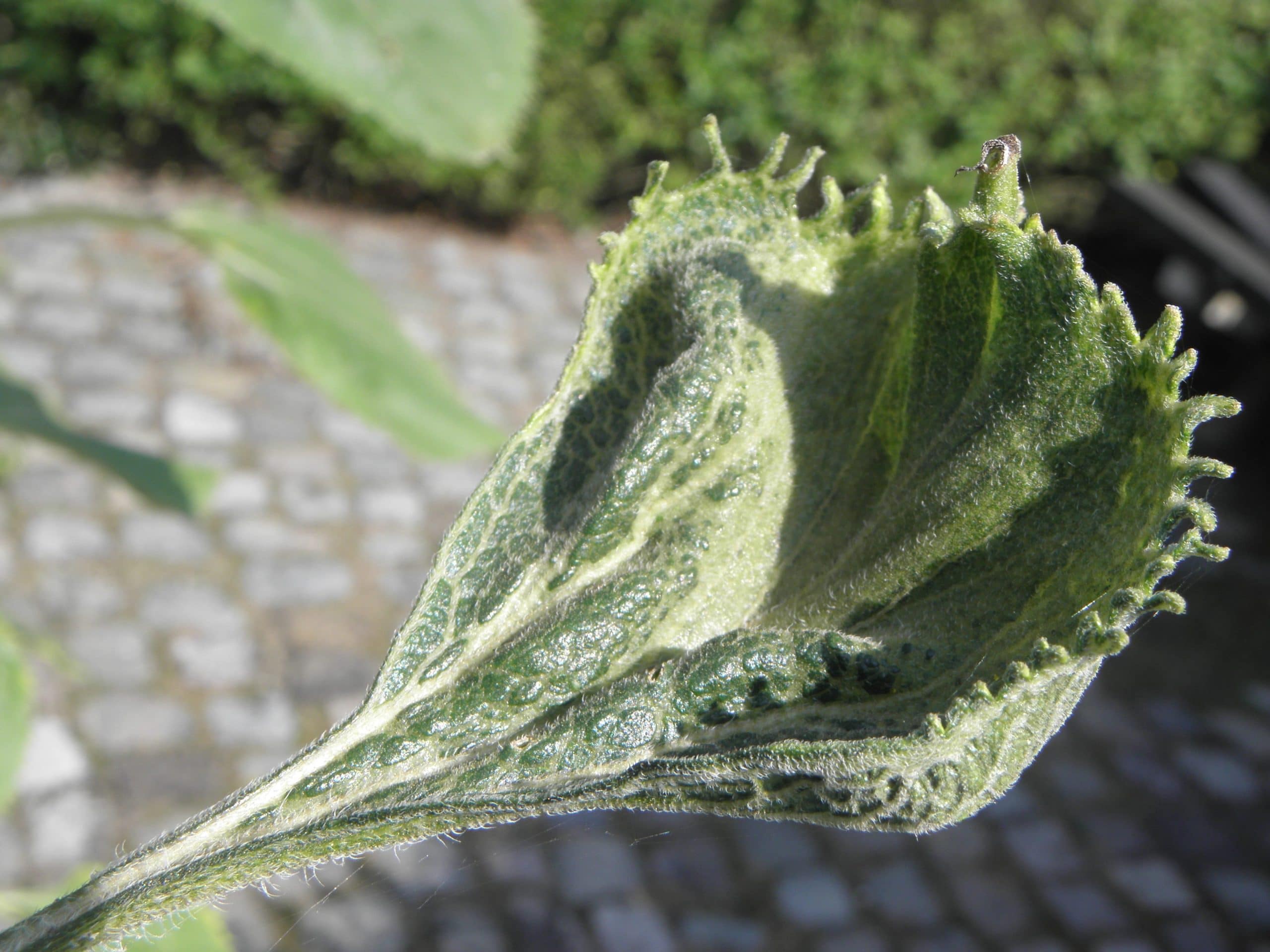
How can we detect mildew? This disease is characterized by the appearance of light greenish spots that end up turning yellowish or even brown on the upper surface of the leaves. Instead, a type of grayish fuzz usually appears on the underside. As a consequence, the leaves dry up and finally fall off the plant. Non-lignified stems may also be affected. luckily there are products to combat mildew.
Among the mildew diseases, the best known is plasmopara viticola, which usually attacks the vine. Other common species are peronospora farinosa, which mainly affects spinach; the P. manshurica, which mainly infects soybeans; and others that harm various vegetables such as potatoes, tomatoes, onions, lettuce, etc. In any of these things, crop yields are greatly reduced.
Oidium
Another of the cryptogamic diseases of plants should also be highlighted: Oidium, also known as powdery mildew. This time, the fungus that causes the pathology is the Uncinula necator. As this disease progresses, the leaves of affected vegetables turn yellow and eventually dry up. However, the most characteristic symptoms are the following:
- White or gray coating ash-like, that covers the leaves.
- Appearance of whitish spots that look like dust.
One of the areas most prone to Oidium It is the Mediterranean area. There all the requirements for an optimal development of the fungus are fulfilled: Low temperatures, high humidity, poor ventilation, stale air, low light levels, and excess nitrogen. All of these factors facilitate the spread of powdery mildew.
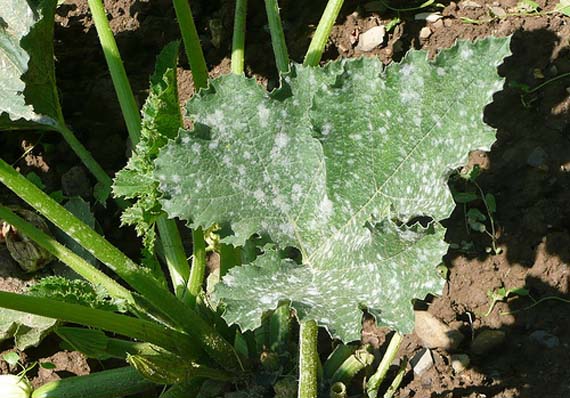
As soon as we have detected the first symptoms of Oidium, Leaves that are infected must be removed as soon as possible. In addition, it is very convenient to improve the aeration of the plant and the orchard in general. For this we can resort to pruning the vegetables and remove some plants, in the event that the density is high. If we do not take action, the powdery mildew will continue to advance. As a consequence, plant growth will slow down and the leaves will turn yellow and die.
When it comes to combating this fungus, there are several spray treatments that we can apply on the leaves. They are the following:
- Use half a liter of skimmed milk for every 8 liters of water. This treatment is very effective.
- Dilute 75 milliliters of hydrogen peroxide in five liters of water.
- Sulphur: We can use it in aqueous spray or powder given with bellows. Of course, it should never be applied during the flowering season.
These have been just a few examples of the best-known cryptogamic diseases of plants. There are many more and its rapid recognition is key to being able to save the crop.